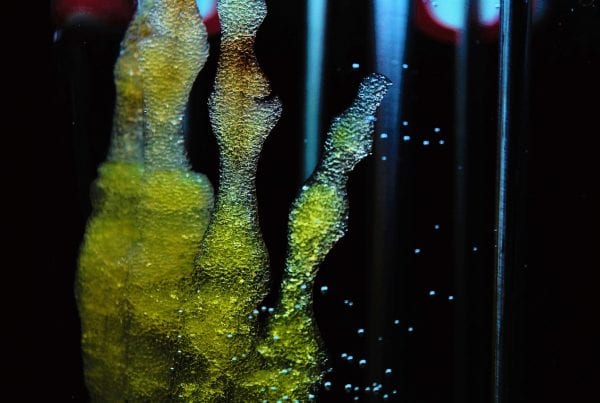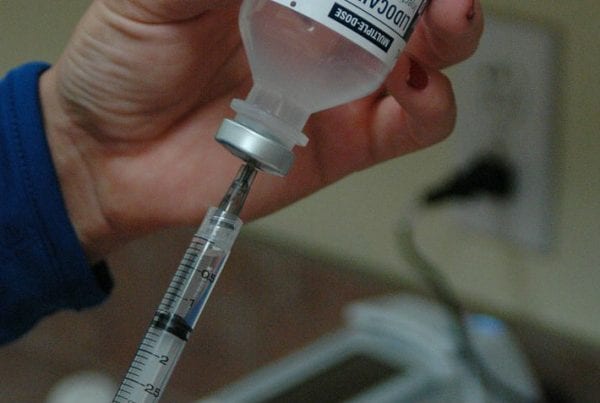Over the years, stem cell therapy has assumed center stage in several different branches of medicine. Due to their efficacy, tolerability, and ease of access, regenerative cells derived from different origins have significantly helped in managing different neurologic conditions.
Different cases that used to require more complicated treatment procedures such as organ transplants and surgical interventions are now being effectively managed with these new procedures. Researchers and medical practitioners believe that cell-based therapy may one day bring a lasting solution to several chronic and life-threatening conditions. With the current research and results we’ve achieved so far, there is hope that stem cell therapies may also help give a clearer understanding of how diseases develop in the human body.
Amniotic suspension is one of the latest stem cell-based products, and it has been confirmed to be an ideal option for knee osteoarthritis. Human amniotic membrane or amniotic suspension is an established treatment option for corneal reconstruction.
Apart from osteoarthritis, it also is being investigated for the treatment of several other conditions such as leg ulcers, skin wounds, burns, and prevention of tissue adhesion in surgical procedures. Because it is much more available than other treatments with cell-based origins, this opens the possibility of neurological medicine for a wide variety of conditions.
Its ongoing preclinical studies include tendon repair, nerve repair, and tendonitis. This article discusses the source, efficacy, and application of amniotic suspension for knee osteoarthritis (OA).
What Is Amniotic Suspension and How Is It Derived?
The amniotic suspension is a regenerative cell derived from the placenta, which possesses several multipotent properties that make it suitable for urologic treatments. Amniotic-derived stem cells (ASCs) were first isolated from amniotic cells in 2007. A few years later, researchers began to convert them into pluripotent stem cells for treating degenerative conditions. They are quite similar to embryonic stem cells but are much more accessible and easier to apply.
Origin of Amniotic Cells
The amniotic membrane—sometimes referred to as amnion—is the innermost layer of the placenta, which surrounds the developing fetus and forms the amniotic cavity (a closed sac found between the embryo and amnion). It consists of an avascular stromal matrix and a thick membrane.
Among the different sources of regenerative cells in the human body, the placenta is considered to be the most effective. This is because, apart from their efficacy, multipotent cells from the placenta are the easiest to extract. When compared to other sources, the placenta is larger in size, making extraction easier.
For instance, the average placenta weighs 590 grams, which is 15 times greater than the average umbilical cord. Also, because the placenta is part of the gestational tissue meant to be discarded after birth, this allows medical practitioners and researchers to maximize their use, as amniotic suspension can be optimally derived from the placenta without much ethical concern. Once the amnion membrane is extracted, it is then processed using the cell suspension culture.
Amniotic Membrane Suspension Culture
Medically, cell suspension—or a suspension culture—is a type of procedure in which single cells or small aggregates of cells multiply while being suspended in an agitated liquid medium. This finished product, known as the human amniotic membrane (HAM) is what is used for treating knee osteoarthritis. It is also sometimes referred to as amniotic suspension or a human amniotic suspension allograft. Apart from knee osteoarthritis, other conditions that can be treated with amniotic suspension include:
- Burns
- Acute wounds
- Chronic wounds
- Cavity wounds
- Diabetic feet
- Deep wounds
- Dehisced wounds
- Granulating or epithelializing wounds
- Pressure ulcers
- Pressure ulcers
- Sloughy wounds
- Venous ulcers
What is Knee Osteoarthritis?
Knee osteoarthritis (OA) is a common type of arthritis that usually affects the knee joint. Just like other forms of arthritis, OA is an inflammatory condition associated with symptoms like pain, stiffness, and swelling. It has four different stages; the symptoms at its earliest stage will be mild, and by the time it gets to its last stage, the pain might be so severe that it might require surgery.
Osteoarthritis: A Major Cause of Disability in the U.S.
Knee osteoarthritis is a major cause of serious disability and usually leads to missing work, making it very difficult for affected people to carry out daily routines. According to a report called Cryopreserved Amniotic Suspension for the Treatment of Knee Osteoarthritis, OA affects over 27 million people annually in the United States. Walking, climbing stairs, and other physical activities may become very painful as the condition advances in stages. It is also a degenerative condition that often affects people who are 50 years and older, but it may also occur in younger people.
As a “wear and tear” type of arthritis, osteoarthritis causes the cartilage in the knee joint to wear away gradually. As the cartilage wears, it becomes rough and frayed, thereby causing the protective space between the bones to decrease. This can make the bones rub up against each other, causing painful bone spurs. People suffering from knee osteoarthritis usually experience the following:
- Swelling and pain, which may be worse in the morning or after resting or sitting
- A feeling of buckling or weakness in the knee
- Increased joint pain during rainy weather
- Difficulty in bending or straightening the knee due to stiff or swollen joints
- Pain flare-ups during or after vigorous activity
- Loose fragments of cartilage can interfere with the smooth motion of knee joints.
- The knee may stick, lock, click, creak, snap, or make a grinding noise during movement.
Osteoarthritis Treatment Methods
There are many different treatment options for knee osteoarthritis, depending on the stage. Intra-articular steroid and non-steroidal inflammatory injections are usually used as the first choice of treatment for OA. Engaging in physical exercise and body weight control, taking over-the-counter or prescription pain relievers, and receiving injections of corticosteroids or hyaluronic acid are some other popular treatments for the degenerative condition. Surgery is another option when it reaches its final stage.
Amniotic Suspension is Superior
However, most of the drugs and injections are for articular function improvement, and pain relief are not always effective. Many of them, including hyaluronic acid, has been found to be only palliative but not therapeutic. This has produced the need for a more potent solution that has the potential to provide optimal results. Thankfully, amniotic suspension has been able to fill this void effectively since its introduction in regenerative medicine.
How Does Amniotic Suspension Work for Knee Osteoarthritis?
Amniotic suspension used for knee osteoarthritis is obtained from healthy donors and then prepared for use by medical practitioners. The human joints contain synovial fluid for nutrition and lubrication of the joint cartilage. In osteoarthritis, the volume of fluid (synovium) in the cartilage can become thickened and inflamed, causing wear and tear as well as pain and joint stiffness. This negative development on the synovial fluid is what the administration of amniotic suspension targets in order to restructure and restore the cartilage.
It Contains Essential Growth Factors
Amniotic suspension contains protein and has anti-angiogenic and bacteriostatic properties to cause a regeneration of the affected synovial fluid. As multipotent cells, it can differentiate into several lineages of cells.
When administered, the placental-derived product usually regulates the inflammatory process in the affected knee, reduces pain, and stimulates (epithelializes) the wound healing process. The anti-inflammatory and anti-adhesion properties in amniotic fluid work wonders in muscular, skeletal, and joint injuries. Its ability to keep inflammation down ensures that the healing process is accelerated.
This gives better results than other procedures which use ice as an anti-inflammatory agent. The available results showed that amniotic suspension also exhibits low or no immunogenicity and acts as a physical barrier to an open wound. The efficacy and safety of amniotic suspension have been established in various clinical studies and the treatment has been widely used to treat many OA patients. Amniotic allograft qualities are as follows:
- It contains important wound healing regulatory proteins
- It helps moderate inflammation and reduce scar tissue formation
- Its epidermal growth factors help promote proliferation of epithelial cells
- It can be stored for a long time and still maintain high potency
- It is available in different sizes
Is There Any Clinical Evidence of Amniotic Suspension for Knee Osteoarthritis
Just like other stem cell-derived products, the safety, efficacy, and tolerability of amniotic suspension were evaluated in animal and human studies before being used for treatments. While there are still other ongoing studies concerning amniotic membrane, the available results from early research show that the product is safe to use.
Where Can I Get Amniotic Suspension?
Presently, there are many distributors and companies that provide commercially available amniotic derived products, and many of them use proprietary processing methods. Due to the avascular, translucent, anti-inflammatory, immunogenic, anti-scarring, and wound healing properties of amniotic membrane, the derived product functions beyond its primary role in vivo. This means the potency of the derived and prepared amniotic suspension is much more than when it is in the living organism (i.e., the fetus).
This factor makes it assume a wide range of regenerative usage in medicine, including its skin-healing role after surgical intervention. This includes treatments of open ulcers and traumatic wounds, reconstruction of the corneal and conjunctival surfaces as well as skin transplants. To ensure it becomes more widely available, various standardized guidelines are being developed in different countries to optimize amniotic production.
Shelf Life of Amniotic Suspension
Available reports show that the bioavailability of the amniotic membrane can be retained for several weeks after processing. Naturally, products derived from amniotic fluid are very potent and have the ability to retain and conserve their properties for a long time. However, to further strengthen the potency and cell viability of amniotic suspension, medical practitioners have successfully used different methods to increase its shelf life.
There are currently many studies showing different cases where products derived from the amniotic membrane have been used six months, one year, and even five years after processing. However, this depends on usage rates and the temperature level of the preservation. Every commercially available amniotic product has an expiration date to help you know what its shelf life is.
Irradiation, lyophilization, air-drying, glycerol, and cryo-preservation are some of the preservation techniques being used to extend amniotic derived products. These methods will not only increase the shelf life but are also expected to widen the scope of amniotic membrane application in several other areas of medical administration different from those ones it is presently known for. Amniotic suspension’s ease of preservation, coupled with numerous clinical and pathological properties, are some of the most significant factors that make it very appealing as a solution to knee osteoarthritis.
Amniotic Suspension Storage Requirements
It is recommended that the product be stored at -60 degrees Celsius or below. It can be delivered in different sizes ranging from 0.5ml, 2ml, and 3ml. Before using the product, check the package integrity. Do not use if it has been opened, damaged, violated, or if you suspect any damage or contamination has occurred as a result of mishandling. Another thing to check is the expiry date. Once the expiration date of the allograft has reached, you must discard it.
How Is Amniotic Suspension Administered?
Amniotic suspension is administered via injection that must be performed by an authorized professional, usually orthopedic surgeons. While the product is considered to be very safe, just like other biological implants, the allograft has the potential to transmit infectious illnesses. Therefore, caution should be applied when administering it. It is also worth noting that the product has not been tested in combination with other medications. If you are taking another prescription or over-the-counter medication, consult your doctor about using amniotic suspension for knee osteoarthritis.
Are There Any Side Effects I Should Know Of?
The product is not known to pose any adverse effects or reactions. Though you may feel a moderate increase in pressure and tenderness in the treated area, that should go away within 72 hours after treatment. Amniotic fluid is extracted from its source and processed following a standardized procedure.
Thorough donor screening, laboratory testing, as well as dedicated sterilization and processing methods are usually employed to reduce the risk of disease transmission. This makes it a very safe product for injection. However, just as with any injection, there is a possibility of infection. Healthcare providers can minimize the risk of infection by limiting the exposure of the needle to pathogens.
How Modern Therapy MD Can Help
Amniotic suspension guarantees beneficial effects for knee osteoarthritis treatment. However, to achieve the best results and prevent the risk of infection, you must choose an experienced and highly trained professional.
Here at Modern Therapy, we are a team of highly qualified and experienced medical experts specialized in health and age management medical services. We use the latest technologies in regenerative medicine to provide our clients with the best anti-aging treatments and supplements, hormone and fitness optimization, and human growth hormone therapy. For knee osteoarthritis and other degenerative conditions, you can count on our Cenegenics and especially trained experts. Getting in touch with us is as easy as filling out this contact form.
Sources
https://www.ncbi.nlm.nih.gov/pmc/articles/PMC4786589/
https://www.hindawi.com/journals/sci/2012/721538/
https://www.myarthritisrx.com/blog/2018/04/06/injectable-biologic-treatments-for-knee-arthritis
https://www.ncbi.nlm.nih.gov/pmc/articles/PMC6307525/
https://orthoinfo.aaos.org/en/diseases–conditions/arthritis-of-the-knee/
https://www.ncbi.nlm.nih.gov/pmc/articles/PMC6434475/
https://www.ncbi.nlm.nih.gov/pmc/articles/PMC6307525/
https://www.ncbi.nlm.nih.gov/pubmed/29544858
https://www.medicalnewstoday.com/kc/stages-osteoarthritis-knee-310579



